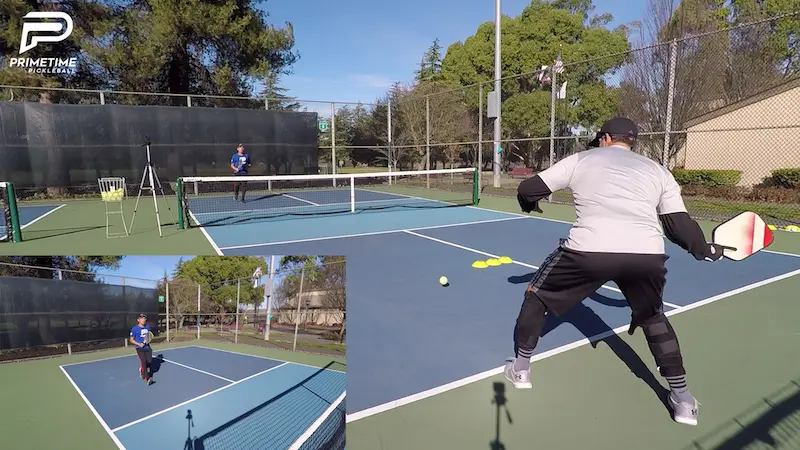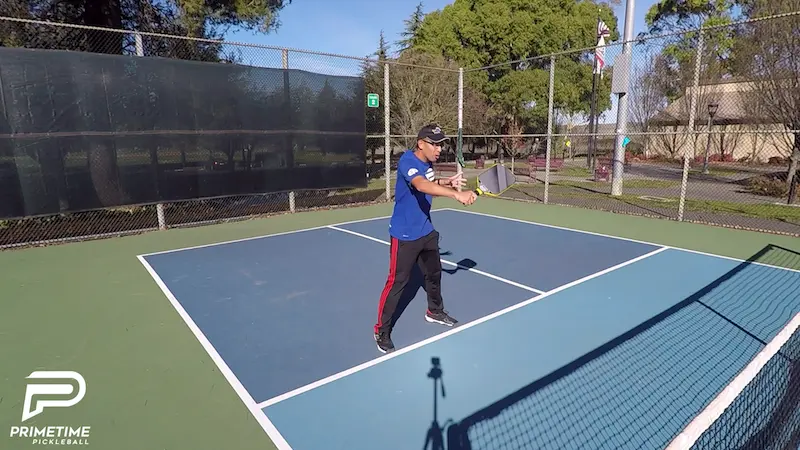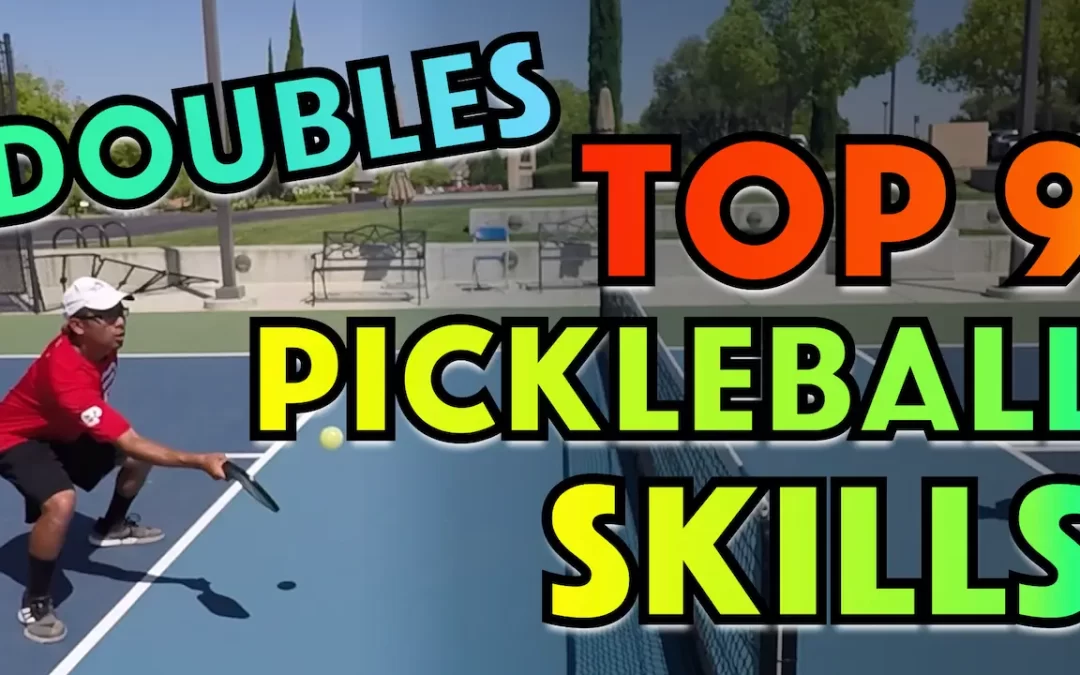Are you still struggling to beat bangers? They keep ripping it at you and you keep trying to hit it soft into the kitchen and it just isn’t working.
It’s a great idea to try and hit it soft against bangers but maybe you’re still working on your control and right now you just keep popping it up and continue to get crushed by drives because your soft shot attempt is landing too deep and to high.
Keep working on those soft hands with DRILLS. Yes drills. We’re big fans and you will get there but in the meantime we have another solution for you that is proven to work against bangers.
It’s easier and it works. You’ll want soft shots too but this is also very very useful against bangers.
We’re going to go over a specific way on how you can beat the bangers. Bangers are players that like to hit the ball really hard from the baseline.
In a previous video we actually talked about one of the ways you can beat them by softening up your hands and trying to draw them into the court.
Today we’ll talk about the second thing that you can do to neutralize bangers and to beat them when you get on the court with them.
Let’s jump right in….
A lot of beginner and intermediate players have a hard time handling these balls that are driven really hard at them.
I’m going to show you a specific way, and I’m going to give you some tools, that you can do to maybe help that and also to neutralize their pace and speed.
As mentioned earlier, in a previous video we talked about how you can soften up your hands and maybe just block the balls short into the kitchen to draw bangers in to the court and into a dink game.
That’s one way to beat them and if that doesn’t work you’re going to need to learn how to volley hard and volley deep into the court. This is really can be very useful and important.
If they’re serving, and you’re the returning team, you’re coming in, and they’re just blasting hard balls at you, you really want to be able to volley that ball deep and volley it hard. You want to keep them back.
The last thing you want to do is is pop it up into what I call the dead zone.
I have some cones set up (see image below).

If I’m up at the non-volley zone line and I’m blocking these balls high and they fall short (in front of the cones), my opponents will T up and they’re just going to blast this ball back at me and keep hammering me with drives.
What we want to make sure we do is we want to volley that ball deep and hard (behind the cones closer to the baseline).
One way we can do that is adjusting our grip pressure.
When we’re blocking balls and we’re trying to have soft hands at the net (as discussed in our previous video) our grip pressure is going to be anywhere from a 3 to 5 (on a scale of 1-10). It’s going to be pretty loose.
But now, with our second technique, when we’re talking about players driving the ball hard at us from the baseline, we want to tighten up that grip pressure and what that’s going to do is that that’s going to allow that ball to have more pace as I volley it back.
The grip pressure is going to be anywhere around 7 to even 8, 9, or 10.
We really want to have a solid volley and one thing that’s really important for that is that we want to extend our volleys.

If we just keep our paddle really close to our bodies and our paddle motion is not extending through the volley it’s not going to really go anywhere. We’re just going to block the ball and then it’s going to go over and it may pop up and then our opponents could drive it at us again.
So it’s really important that when you volley you really push that ball out and you have a pretty tight grip pressure anywhere from 7 to 9 (maybe even a 10).
Drill
I have my friend Danny with me today.
He’s going to serve and then I’m gong to return and he’s going to try to drive the ball.
I’m going to try to come up and I’m really wanting to not have my volleys inside that dead zone area (in front of the cones) where he could drive it again.
I want to keep it deep and I want to make sure my grip pressure is closer to a 10 and trying to extend my volleys at his feet.
In a real game, you’re serving cross-court but for this drill we’re going to play skinny singles (half the court). We’re going to follow the steps mentioned above and then just play out the point.
Some of you might think “oh I don’t.. sometimes they drive and sometimes they drop it”… this is true. But it’s always best to be ready for a drive just in case.
If you’re always ready and expecting the drive first and they drop that ball it’s a slower shot that you can usually get to.
Especially if they’re back at the baseline we want to be ready to volley and extend our volley and push that ball with a with a very tight grip pressure.
If you know your return is short and you know that the players you’re playing against like to drive the ball you have to be ready for a fastball.
You have to be ready for a drive.
When I come up to the non-volley zone, I want to make sure I’m stopped at the line, that’s number one. Number two, I have be ready to really push that ball and make them pay for driving it.
I can’t just hold my paddle up close to my chest with no movement on my paddle because it’s just going to block and it could potentially pop up.
So, it’s really important the grip pressure is tight and I’m really extending this follow-through keeping it deep at the feet.
Keep those things in mind: tight grip pressure remember that number one, number two is you really want to extend those follow throughs on those volleys (if you’re just blocking and you’re not having any movement no forward pushing movement on your volleys that ball could potentially pop up).
I know the balls are hard and that they are coming at you fast but that’s something you have to anticipate especially if you run into players that like to drive the ball.
I hope this blog/video helped.
Go out there and practice with a partner. Get a partner out there just driving balls at you and practice really connecting out in front, connecting on your volleys and hitting nice solid volleys back deep into the court so that you can make those bangers pay.






